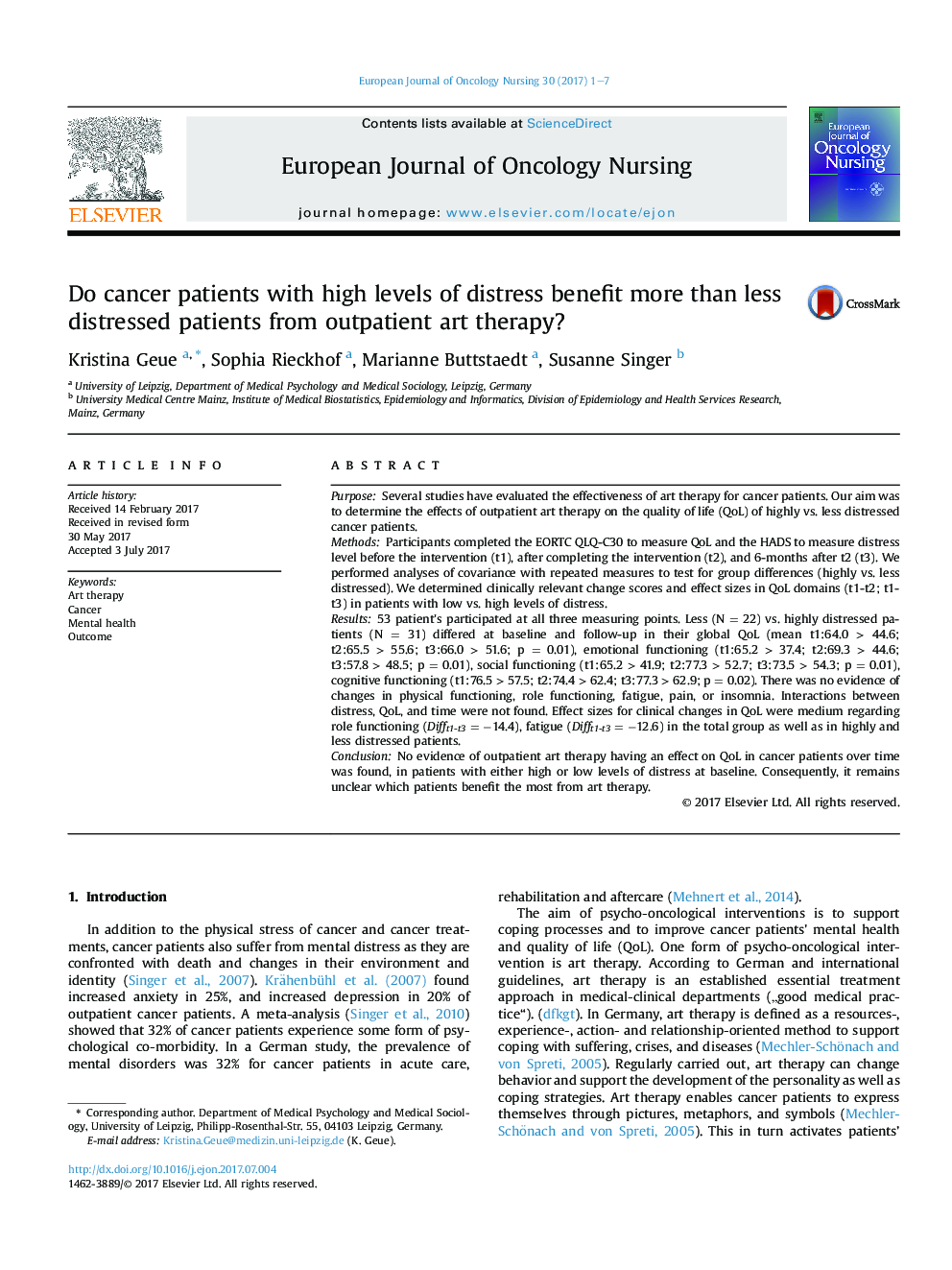| Article ID | Journal | Published Year | Pages | File Type |
|---|---|---|---|---|
| 5567707 | European Journal of Oncology Nursing | 2017 | 7 Pages |
PurposeSeveral studies have evaluated the effectiveness of art therapy for cancer patients. Our aim was to determine the effects of outpatient art therapy on the quality of life (QoL) of highly vs. less distressed cancer patients.MethodsParticipants completed the EORTC QLQ-C30 to measure QoL and the HADS to measure distress level before the intervention (t1), after completing the intervention (t2), and 6-months after t2 (t3). We performed analyses of covariance with repeated measures to test for group differences (highly vs. less distressed). We determined clinically relevant change scores and effect sizes in QoL domains (t1-t2; t1-t3) in patients with low vs. high levels of distress.Results53 patient's participated at all three measuring points. Less (N = 22) vs. highly distressed patients (N = 31) differed at baseline and follow-up in their global QoL (mean t1:64.0 > 44.6; t2:65.5 > 55.6; t3:66.0 > 51.6; p = 0.01), emotional functioning (t1:65.2 > 37.4; t2:69.3 > 44.6; t3:57.8 > 48.5; p = 0.01), social functioning (t1:65.2 > 41.9; t2:77.3 > 52.7; t3:73.5 > 54.3; p = 0.01), cognitive functioning (t1:76.5 > 57.5; t2:74.4 > 62.4; t3:77.3 > 62.9; p = 0.02). There was no evidence of changes in physical functioning, role functioning, fatigue, pain, or insomnia. Interactions between distress, QoL, and time were not found. Effect sizes for clinical changes in QoL were medium regarding role functioning (Difft1-t3 = â14.4), fatigue (Difft1-t3 = â12.6) in the total group as well as in highly and less distressed patients.ConclusionNo evidence of outpatient art therapy having an effect on QoL in cancer patients over time was found, in patients with either high or low levels of distress at baseline. Consequently, it remains unclear which patients benefit the most from art therapy.
